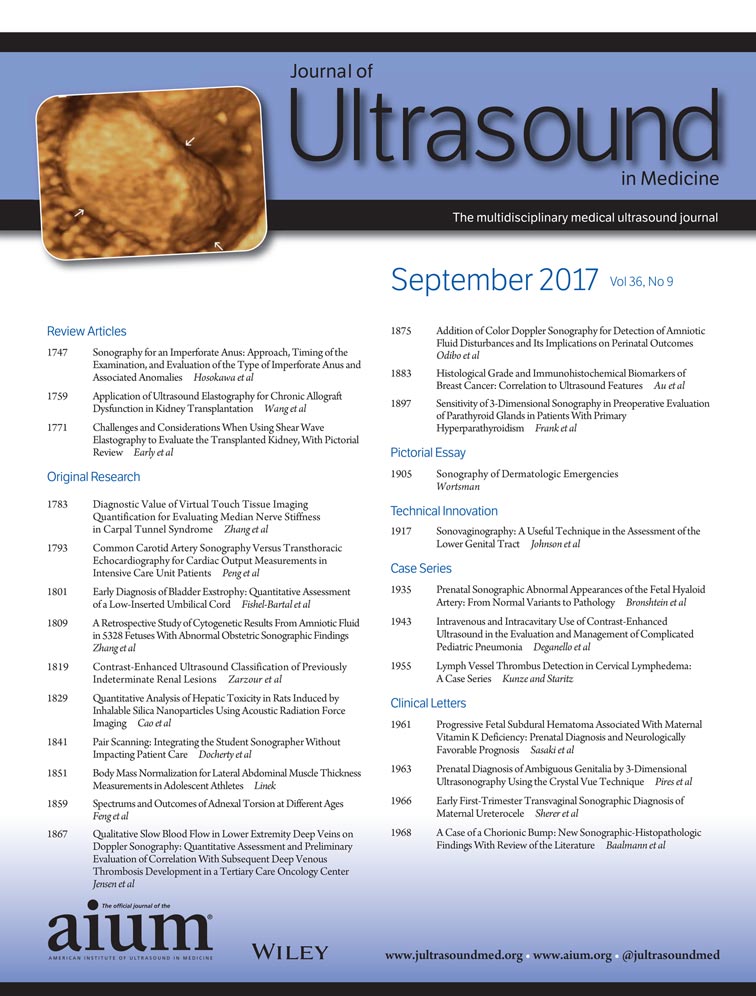Spectrums and Outcomes of Adnexal Torsion at Different Ages
This study was supported by research grant 81571687 from the National Scientific Foundation Committee of China and grant 2014BAI06B05 from the National Science-technology Support Plan Projects. J.-L.F. and T.L. contributed equally to this work.
Abstract
Objectives
To investigate the role of ultrasound in the preoperative diagnosis of adnexal torsion and describe its histological spectrum and outcomes at different ages.
Methods
This study comprised a retrospective investigation of a data set that included 195 female patients with clinically suspected adnexal torsion between January 2010 and July 2015. Each patient received a detailed pelvic ultrasound examination by an experienced ultrasound examiner, and a definitive diagnosis was achieved via surgery. The accuracy of an ultrasonic diagnosis of adnexal torsion was assessed. The patients were divided into three groups: female children and adolescents, fertile women, and postmenopausal women. The size, type, histological spectrum, and outcome of adnexal torsion in the different groups were also described.
Results
The sensitivity, specificity, and accuracy of ultrasound were 0.84, 0.77, and 0.81, respectively. There were significant differences in the presence of ultrasonic hallmarks among the true positive, false positive, and false negative cases of adnexal torsion. Ovarian torsion was identified in 94 cases, and isolated tubal torsion was identified in 15 cases. The most common histologic diagnoses of the pediatric group and the other two groups were a normal ovary and teratoma, respectively. The most common histologic diagnoses in the cases of isolated tubal torsion were mesosalpinx cyst and oviduct inflammation.
Conclusions
Ultrasonography plays an important role in the preoperative diagnosis of adnexal torsion. Despite ovarian involvement in most of the cases, isolated oviduct torsion was not uncommon. The spectrum of histological diagnoses varied among the age groups.




